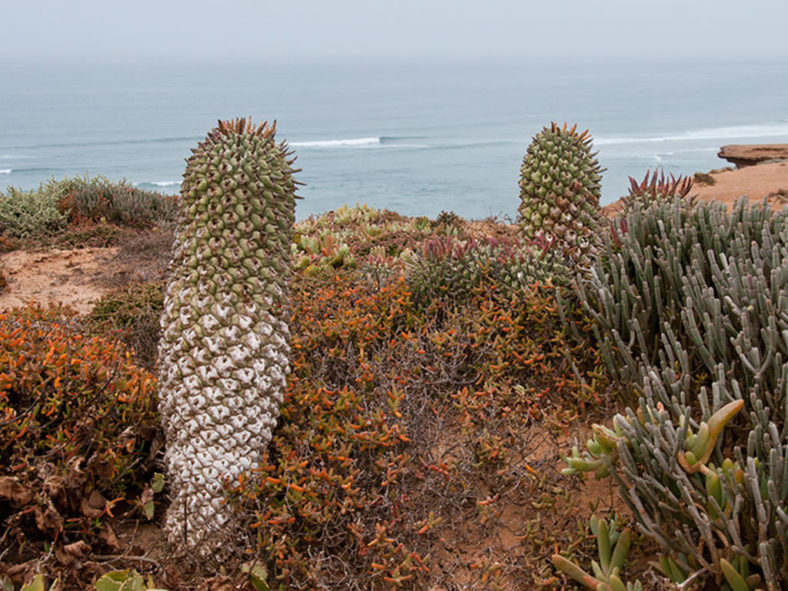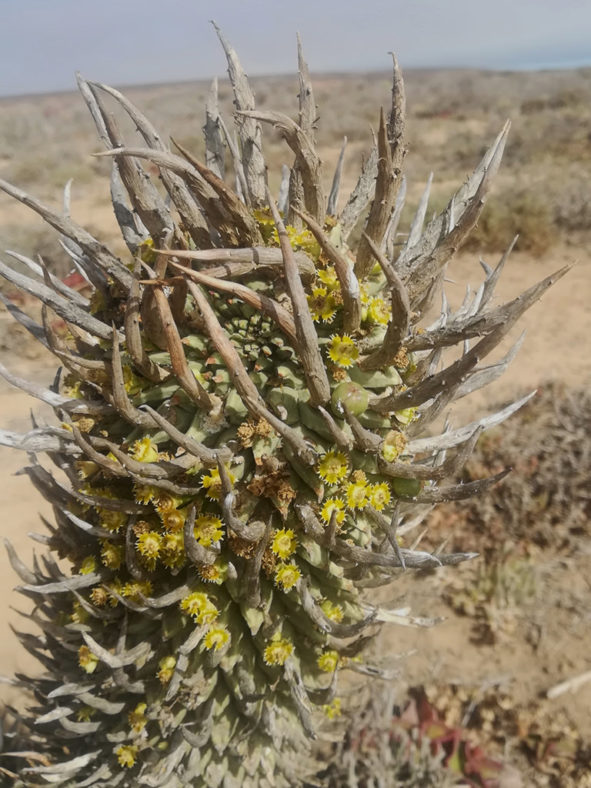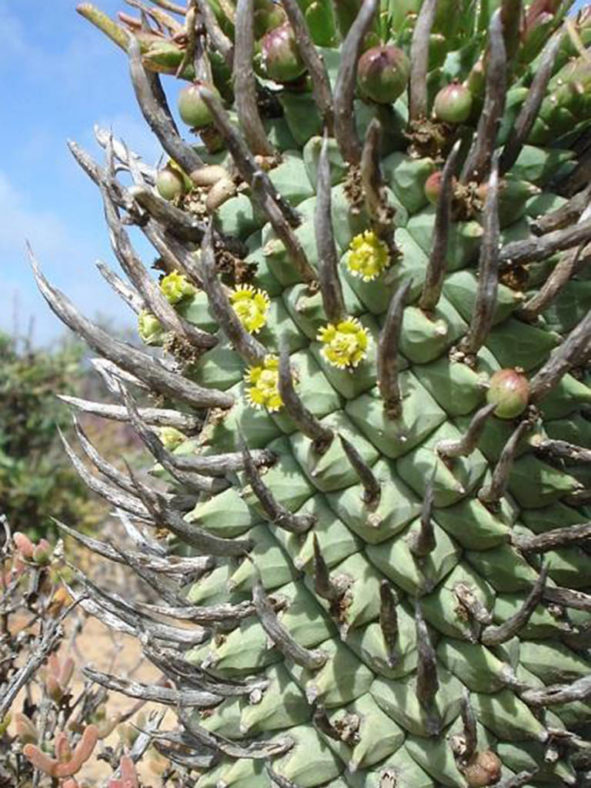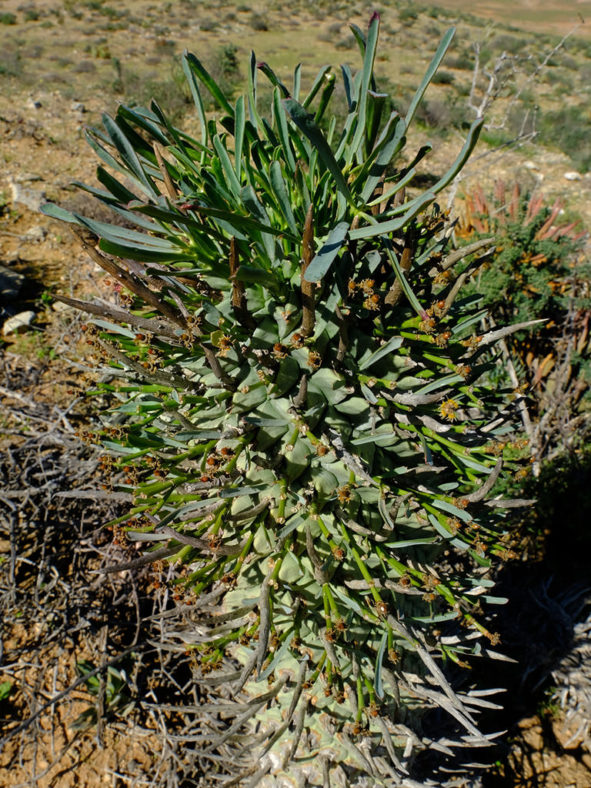Scientific Name
Euphorbia schoenlandii Pax
Common Name(s)
Compass Barrelwort, Compass Milkbarrel, Compass Plant
Scientific Classification
Family: Euphorbiaceae
Subfamily: Euphorbioideae
Tribe: Euphorbieae
Subtribe: Euphorbiinae
Genus: Euphorbia
Etymology
The specific epithet "schoenlandii (skoen-LAND-ee-eye)" honors the German botanist Seimar Schönland (1860-1940), the founder of the Department of Botany at Rhodes University and the second-largest herbarium in South Africa.
Origin
Euphorbia schoenlandii is native to South Africa, where it occurs in sandveld areas with deep red aeolian sands on lower loamy slopes from Kotzesrus to Strandfontein.
Description
Euphorbia schoenlandii is a monoecious succulent with a cylindrical, usually solitary stem covered with conical, spirally arranged tubercles bearing slender sterile shoots in axils persisting as woody spines. The stem can grow up to 20 inches (50 cm) tall and up to 3 inches (7.5 cm) in diameter, always slightly pointing northwards, hence the common names. The leaves are linear–lanceolate, soon deciduous, and can measure up to 1 inch (2.5 cm) long and 0.15 inches (0.4 cm) wide.
Cyathia with 4 or 5 green glands appear around the stem apex, each on a short, non-persistent peduncle that arises in the axil of the tubercle and between the short sterile shoot and stem. The fruits are glabrous capsules on short, erect pedicels.

How to Grow and Care for Euphorbia schoenlandii
Light: This succulent is a sun lover. Place your indoor E. schoenlandii in a sunny window. You may place the pot on the balcony or in the garden from spring to fall. Increase sun exposure gradually to prevent sunburn.
Soil: E. schoenlandii requires well-drained soil. Use a commercial mixture formulated for succulents, or make your own potting mix.
Hardiness: High summer temperatures are not a problem, but low winter temperatures can damage or kill your plant. E. schoenlandii can withstand temperatures as low as 25 to 50 °F (-3.9 to 10 °C), USDA hardiness zones 9b to 11b.
Watering: From spring to fall, water when the top inch (2.5 cm) of soil feels dry. Reduce watering in winter. Give it just enough water to prevent wilting. The best time of the day to water your E. schoenlandii in the warm season is the evening.
Fertilizing: Plants in a pot need regular feeding. Apply a balanced fertilizer in a 10-10-10 NPK formulation, diluted to 1/4 strength weekly during the growing season.
Repotting: E. schoenlandii will benefit from repotting, but it does not need to be repotted yearly. When your plant is outgrowing its pot, it is time to repot it in a larger pot and give it a fresh potting mix. The repotting is best done in early spring, at the beginning of the growing season. Wear gloves, protective clothing, and appropriate eye protection when repotting this succulent.
Propagation: The easiest and fastest method of propagation for this plant is by using cuttings. It can also be grown from seeds but can be difficult to germinate. The best time to take cuttings is in spring or summer. Sow the seeds in spring.
Learn more at How to Grow and Care for Euphorbia.
Toxicity of Euphorbia schoenlandii
E. schoenlandii produces a white milky sap that is toxic and can cause irritation to the skin and eyes. Therefore, keeping your plant away from children and pets is best.
Links
- Back to genus Euphorbia
- Succupedia: Browse succulents by Scientific Name, Common Name, Genus, Family, USDA Hardiness Zone, Origin, or cacti by Genus
Photo Gallery
Click on a photo to see a larger version.


